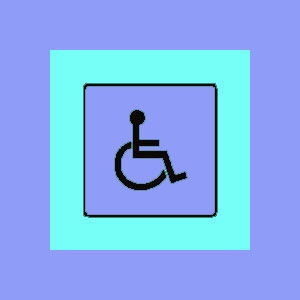
Wheelchair sciatica can be a nightmarish suffering brought on by confinement to a wheelchair or other static seated posture. Obviously, people who have no feeling from the waist down do not have to bear this horrific occurrence, but the millions of people who have feeling, but limited use of their legs, are often prone to enduring chronic sciatica from sitting in their chairs day in and day out.
Regardless of the reason why a person might be confined to a wheelchair, sciatica is always one of the more common painful afflictions. Patients who are suffering from incomplete spinal cord injury, a disease process, a physical impairment or simple old age might all be subjected to the added burden of lower back, buttocks and leg pain, on top of all they already have to cope with each and every day.
This article will examine the problem faced by these patients in dealing with sciatica related to use of a wheelchair or confinement to a static seated position.
Wheelchair Sciatica Problems
Wheelchairs and motorized scooters are fantastic. They allow unrivaled mobility to people who are functionally limited. However, they also place all the body weight on the buttocks and lower back for extremely long and grueling periods of time.
This stress can cause lower back and leg pain in any person, but is surely the worst for poor souls who may be using a wheelchair due to a lumbar injury or other painful event. This can really make it a tough choice to sit and be mobile or simply lie down and be comfortable.
Sciatica from Continuous Sitting
Many patients find that certain types of cushions can really take a huge strain off their backs, buttocks and sciatic nerves. Investing in a quality cushion will help maintain adequate circulation and even prevent the common troubles of sores, heat buildup and chaffing common to wheelchair users. Memory foam is a popular product, specifically designed to reduce pressure from these kinds of situations. The wheelchair, itself, can also help or hinder, as some are more flexible in their positioning, while others force a patient into a posture which may exacerbate their pain.
If you have the ability to get in and out of your wheelchair easily, then it is advised to try and vary your position throughout the day. When viable, try to move around, lie down for a short time or stand if you are able. This will give your anatomy a much needed rest from the static sitting posture.
If this is beyond your ability, try to get help to move or reposition yourself as much as possible. I know that this is easier said than done, but for patients with quality caregivers, this can really make a big difference in comfort level.
Wheelchair Sciatica Help
Some wheelchair users find that they can release pressure off one side at a time by placing more of their weight on one hip, then the other. This may help in times when you can not move around and are simply stuck seated.
Other patients find that firmly placing their elbows and forearms on the handrails can help elevate them out of the chair a tiny bit for a few moments at a time. This can create a break from the same posture, providing temporary relief from stiffness and also delivering a nice upper body exercise.
Just remember that being in any one position too long is always detrimental to the health of any person. Do whatever you can to vary your posture throughout the day and you will find your body less painful and more functional.
For detailed information about what else you can do to relieve this type of pain, talk to your physical therapist for personal recommendations.




